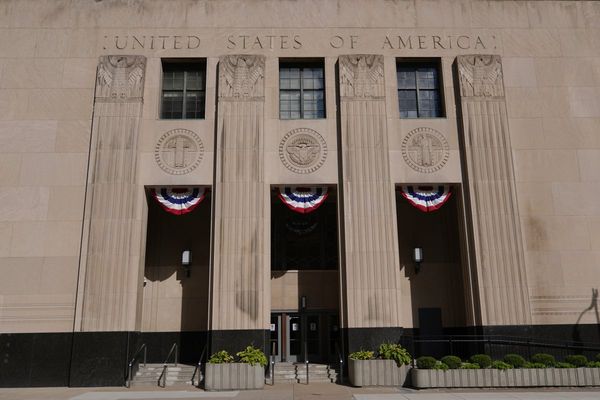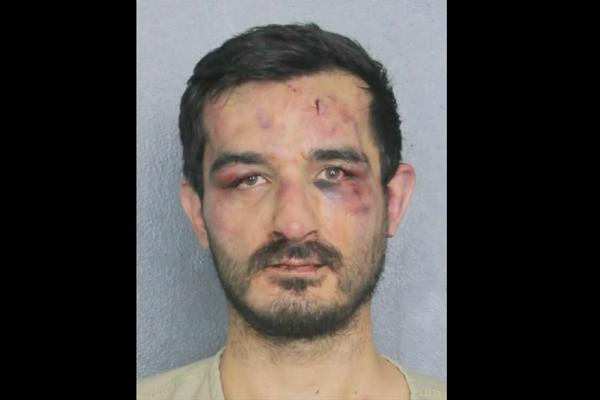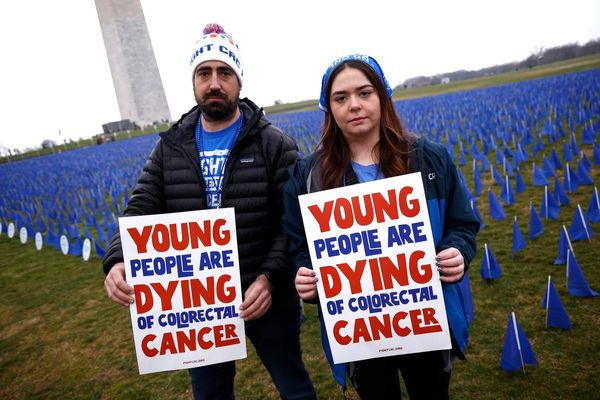
Covid-19 reached the UK in late January and the country endured a three-month long lockdown from March 23 to get the virus under control.
Every region of the UK has been affected, with London facing the biggest peak when coronavirus first arrived in England.
Cases are accelerating once again, with the city of Liverpool plunged into lockdown and the Government forced to introduce a new three-tier system of local measures.
READ MORE: Will there be a 'circuit breaker' lockdown in England?
The Telegraph’s map below plots where all official cases of coronavirus have been confirmed in the UK. It is sourced from Public Health England announcements and updated regularly based on trustworthy data.
According to the Department of Health and Social Care, the number of confirmed UK cases has reached 965,340, while the total number of deaths within 28 days of a positive test is 45,955.
How many coronavirus cases are in your area?
Public Health England releases a daily update on the number of confirmed coronavirus cases in each English county.
Using The Telegraph’s Coronavirus Live Tracker, you can follow the disease’s spread, the latest information on symptoms, and the UK's rate of growth.
Type your postcode into the tool below to find out how many cases there have been in your local area and whether they are rising or falling.
How the NHS managed
From the outbreak of the virus, the NHS was hit by a number of critical issues:
PPE: When the virus erupted in Britain, NHS workers complained that a shortage of vital personal protective equipment (PPE) put them at risk. Some staff were forced to wear bin bags as makeshift protection. The Government was criticised for shipping millions of pieces of PPE to Europe, despite the shortage, and for purchasing a massive quantity of masks and gowns, bought from factories in China and Turkey, that were found to fall below UK standards. Calls for an inquiry into the Government’s procurement process mounted after it emerged the taxpayer had spent an “eye-watering” £15 billion on PPE.
Ventilators: At the start of the outbreak, the Government ordered 8,000 ventilators, used to treat severely ill Covid-19 patients, with a promise that the first batch would be in hospitals by April. By June 10, only about 5,000 new ventilators had been delivered to the NHS and ministers decided that hospitals had a sufficient supply. Derek Hill, of University College London, was a member of the Independent Regulatory Advisory Group which examined new designs of ventilators. He said the Government wasted time trying to develop entirely new machines. “It was trying to reinvent the wheel thinking it would be quicker," Mr Hill said. “They misunderstood the complexity of these devices and the risk from the start. For novel designs it was pretty obvious they did not meet the clinical need and would take a long time to get through the regulatory process.”
Care homes: The Government’s strategy to prevent the NHS being overwhelmed with coronavirus cases led to elderly people being discharged from hospitals back into care homes, to clear space in wards. This was done without testing for infection, despite the risk of transmission. It emerged that Public Health England had warned the Government about doing this in February, and officials were criticised for not testing patients before they were transferred, despite repeated warnings from care home managers that it was seeding infections among the most vulnerable. The Telegraph reported on October 21 that staff will be banned from working in more than one care home in an attempt to halt the spread of coronavirus. The Telegraph understands the Government is drawing up legislation that will make it illegal for care homes to employ staff working at multiple sites. It follows concerns repeatedly expressed by Government scientists that outbreaks within the sector are "seeding" infections across whole communities, with agency workers singled out.
Contact tracing: The UK was much-criticised for abandoning contact tracing on March 13 while other countries, which have achieved a lower death toll, continued to trace contacts and cut off routes of transmission for the virus. The UK’s first attempt at a contact tracing app was abandoned in May, after an unsuccessful trial on the Isle of Wight. Scotland and Northern Ireland currently have their own independent apps, while the latest version of the England and Wales app launched in late September.
NHS deaths and staff shortages: A number of doctors, nurses and NHS staff died from coronavirus. At the height of the outbreak, many NHS staff were sick or forced to quarantine because of suspected exposure. MPs were told in July that hospitals had failed to test their workers for coronavirus because they feared having to send too many of them home, when almost half were infected at the peak of the pandemic. In March, anticipating a shortage of NHS staff, Health Secretary Matt Hancock launched a call for a UK “army” of 750,000 volunteers. Many medical students joined the efforts, and retired doctors and nurses came back to work to fight the virus.
Non-Covid cases: A combination of lockdown, people’s fear of the pandemic and prioritising emergency capacity led to a tremendous NHS case backlog. Particularly affected are routine operations and cancer treatments, with some hospitals described as being “at a stand-still”. More than 111,000 people have now been waiting for routine NHS treatment for over a year and routine hospital treatments are down 43 per cent. A campaign, "Help Us to Help You", tells patients that they will not be viewed as a "burden" if they attempt to seek help for non-Covid ailments this winter. It comes amid fears that the mantra of "Protect the NHS" led to thousands of patients being unable or unwilling to seek help during the first wave.
How the UK got into and out of a national lockdown
On March 23, Boris Johnson placed the UK on a police-enforced lockdown with drastic measures in the fight against the coronavirus outbreak.
The Prime Minister ordered people only to leave their homes under a list of “very limited purposes”, banning mass gatherings and ordering the closure of non-essential shops.
Mr Johnson announced his phase two strategy on May 10, outlining a gradual easing of the restrictions, rather than a wholesale lifting of the lockdown. However, reaction to his speech was fierce, with many accusing the Prime Minister of confusing the British public.
On May 11, Mr Johnson published his “roadmap” to leave lockdown, setting out a three-phase strategy to gradually lift the current restrictions.
Mr Johnson later announced on May 28 that the five tests to ease lockdown had been met, confirming that gatherings of up to six people could take place in outdoor spaces from June 1.
On June 23 – exactly three months after the country was put into lockdown – Mr Johnson hailed the beginning of the end of Britain’s “national hibernation”.
The Prime Minister allowed families and friends to mingle indoors and even go on holiday together from July 4. This day, which became known as Super Saturday, also saw pubs, restaurants and hairdressers reopen, as the two metre social distancing rule was reduced to one metre.
But Chris Whitty, the chief medical officer, warned that many of new social distancing measures would have to remain in place “until this time next year” because a coronavirus vaccine is still a long way off.
On July 17, Mr Johnson set out his roadmap for ending lockdown, which allowed remaining leisure facilities to reopen and all beauty treatments to resume from August 1. Mr Johnson also relaxed official guidance advising people to "work from home if you can" in a bid to restart the economy.
The government is keen to avoid another blanket lockdown. However, preventing a national lockdown will depend on how effectively the Government can respond if the infection rate rises quickly in multiple areas of the UK.
As of September 14, gatherings of more than six people are banned in England. The Government has introduced these tough new measures to combat a sharp rise in coronavirus infection rates.
On September 22, the Prime Minister announced a raft of new measures including a 10pm curfew on pubs and restaurants, a 15-person cap on weddings and a return to working at home for office workers, which are likely to remain in place until March, a year on from the start of lockdown.
As the rate of new cases showed no sign of slowing, Mr Johnson announced on October 12 a new three-tier system of local lockdowns. Areas including Liverpool and Manchester have been plunged into severe restrictions.
READ MORE: Use our postcode tool to check what tier your area is in
Read the latest restrictions for:
How did coronavirus spread?
At the end of December, the Chinese authorities sent out a public alert warning that a “pneumonia of unknown cause” had been identified in Wuhan, central China.
Some 10 days later, on January 7, 2020, scientists announced that a new coronavirus was the source of the outbreak – quickly adding that it did not appear to be spreading between humans.
At that point, fewer than 60 cases had been found. The UK’s first confirmed cases were diagnosed on January 31 - tourists in York - although a number of people had fallen ill with Covid-like symptoms earlier in the year after returning from abroad.
The virus, since given the name SARS-CoV-2, has spread to well over 180 countries, infecting more than 43.7 million people with the disease Covid-19 and killing more than 1.1 million. Scientists believe that the virus mutated into two strains based on differentiation of the protein “Spike” that gives the virus its distinctive “crown” shape. An “L-type” variation accounted for around 70 per cent of cases, displacing the older “S-type”. It is a matter of scientific debate whether this means the newer variant is more infectious, while vaccine developers believe that new treatments will be effective against both current strains.
This map, which updates automatically, shows where the disease is now, how many cases there have been and how many people have died:







